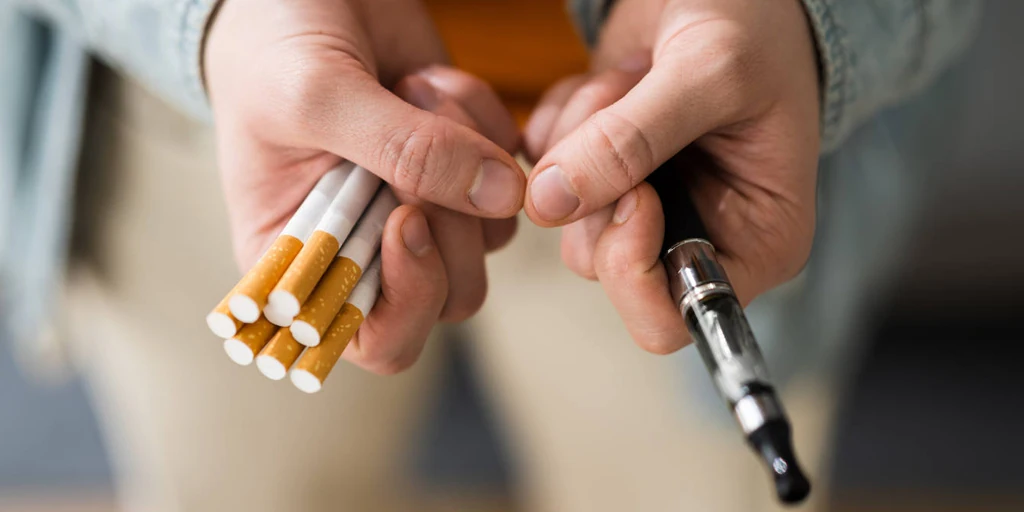Single-use insulin pens changed Brian Brandell’s life.
Growing up with type 1 diabetes in the 1970s, I had to carry glass syringes and insulin vials everywhere. So in 1985, when Novo Nordisk first introduced a disposable prefilled pen that combined multiple doses of medication with one syringe, Brandell quickly adopted the new device.
“They were a blessing from heaven,” he recalled.
But more recently, he began to weigh the effects of all the plastic in the pens he had thrown away over the years and the potential harm to people and their environment.
“I’m using this life-saving product,” he said in frustration, “but in order to use it, I have to be willing to harm the environment.”
It’s no secret that the world has a plastic problem. This versatile, durable and cheap material is clogging the world’s oceans, leaching toxins into its biomes and contributing to climate change. Some countries have been drafting a treaty proposal that could ban certain single-use products and set targets to reduce plastic production around the world. But negotiations have stalled due to opposition from the chemical and fossil fuel industries.
Worldwide, the healthcare industry used more than 24 billion pounds of plastic in 2023 and is projected to generate 38 billion pounds annually by 2028, according to BCC Research, a global market research firm.
Plastic, which is typically made from fossil fuels, is also a major source of greenhouse gas emissions. In the United States, the healthcare sector accounts for eight percent of the country’s carbon footprint.
Medical device companies say they are trying to reduce waste, whether by recovering and recycling products, decreasing the amount of plastic in devices and packaging, or redesigning items with non-petroleum-based materials.
For the average person, the most visible healthcare waste is the disposable devices used at home, from respiratory inhalers to syringes, tampon applicators, masks and oxygen tubes.
Mitch Ratcliffe, editor of Earth911, a website that contains an extensive database of American recycling facilities, said there was little hope of recycling these items at this time. This is due in part to their irregular size, safety concerns that non-sterile items can spread disease, and that they are often composed of materials that cannot be processed together. “We have an incredibly complex economy full of intricately designed things. “We just never thought about taking it apart again.”
Few devices are more ubiquitous than insulin pens. About a third of the 37 million Americans with diabetes manage the disease with insulin, according to the Centers for Disease Control and Prevention.
Novo Nordisk alone manufactured 750 million insulin pens in 2021, made from more than 28 million pounds of plastic. The pens include a glass vial in a plastic frame and are not designed to be disassembled into parts for recycling purposes. It is believed that almost all of them end up in household waste.
Oregon City’s Brandell has been trying to do something with the discarded devices. A biomedical engineer, he dedicated his career to developing pacemakers, defibrillators and catheters. Semi-retired in 2021, he worked with a partner to design a portable device that carefully cuts insulin pens so they can be disassembled. It also works in plastic dispensers of Ozempic, the diabetes medication that millions of people currently take to lose weight.
But Brandell admitted that dismantling the pens was only the first step. The plastic in pens is high quality, but it is not easy to process at municipal recycling sites. It would probably be bundled with other plastics and could still end up in a landfill or incinerator.
It is also exploring whether its device, also made of plastic, can be made from bamboo or another sustainable material. “It’s pretty hard to sell someone on the idea that I want them to buy this plastic device so I can save some plastic,” she said.
Global biomedical giants are facing increasing public pressure to change the life cycle of their products. Novo Nordisk has said it plans to redesign its products to reach the goal of net zero emissions by 2045.
This is a change from the company’s history, when disposability was a desirable convenience. “No one thought about designing it for circularity, or what material we should use, or limiting the thickness of the plastic,” said Katrine DiBona, the company’s vice president.
In 2020, the company started a program in three Danish cities to recycle used insulin pens. It provided pharmacists with collection bags to give to patients picking up prescriptions, who could then return the used devices at the next visit. The pens were then collected by a third-party recycling company to be disassembled, sterilized and processed.
Novo Nordisk has since expanded the program nationally and opened it to competitors, and began pilot efforts in the United Kingdom, France and Brazil. But public behavior is difficult to alter. By the end of 2023, only 21 percent of the company’s pen users in Denmark had returned their devices.
GSK, which sells more than 200 million respiratory inhalers a year, had similar problems with a take-back scheme for the devices in the UK between 2011 and 2020. The plastic components of the inhalers are recyclable through most take-back programs on sidewalks, but the aluminum cans containing the medication are not. So the company collected used devices from pharmacies, recycled the components it could, and incinerated the rest.
However, the program never generated much interest from consumers. Over nine years, only 24,000 pounds of plastic were recovered from the inhalers, which Claire Lund, the company’s vice president of sustainability, called “absolutely minuscule” compared to the roughly 5 million pounds of plastic needed to produce the inhalers each year. anus.
Of more concern to environmentalists is the propellant in many inhalers, typically a fluorinated gas that is a more powerful driver of global warming than carbon dioxide. In 2021, GSK began developing a substitute that Lund said could significantly reduce carbon emissions.
But the company is still testing the new formulation and expects it will take years to get the substitute approved in the 140 markets where existing ones are sold.
Lund said the company had thought about creating a reusable product. “It’s been on the table many times and then rejected,” he said.
In contrast to Novo Nordisk’s boutique focus on recovering material from a specific product, US waste management company Triumvirate Environmental is seeking commercial applications for reused medical waste.
In 2014, the company purchased machinery from a plastic lumber company and grafted it to the back of a medical waste plant in Jeannette, Pennsylvania, with the idea of turning some waste into useful products.
John McQuillan, the company’s chief executive, said the plant, after a $70 million investment, was taking waste from hospitals and pharmaceutical companies – “some of the most disgusting things on the face of the planet” – and processing it at through a complex set of machines.
Much of the waste is still incinerated, but items composed of useful plastics, including containers full of syringes and surgical instruments wrapped in packaging, are identified, shredded and turned into construction materials.
“It’s like a smelly Willy Wonka,” he said.
The process is six to eight times more expensive than digging the waste into a hole in the ground, McQuillan estimated, although Triumvirate recovers some costs by selling the final products.
There is no shortage of interest from healthcare companies, which supply much more plastic waste than the Triumvirate plant can process. The factor limiting rates, however, is the demand for the structural plastic lumber they produce, which is utilitarian and has to compete with alternatives made from cheap plastics. “It comes in any color you want, as long as it’s black and as long as your definition of black is pretty liberal,” McQuillan said.
Still, in 2022 Triumvirate sold 12 million pounds of the material, including to Menards and Home Depot, which market it for landscaping and as a base for turf fields.
Like most recycling, the process requires a lot of energy. The plant primarily receives plastic waste from customers in the northeastern United States because the materials tend to be loosely packaged, making them expensive to transport long distances.
Scientists point out that this energy expenditure almost eliminates environmental benefits. Recycling a product typically recovers less than 10 percent of its carbon footprint, according to Dr. Andrea MacNeill, founder of the Planetary Healthcare Lab at the University of British Columbia, because most of a product’s environmental impact occurs during its manufacturing. “We are never going to recycle for a healthy planet,” she said.
It was much more important for manufacturers to design products capable of being reused for years, he said, adding that this would also require transforming their business models. “Right now, your profit margin depends on high-volume consumption.”
The next advances in sustainable medical device design could occur at the rugged brick-and-glass headquarters of Battelle, a nonprofit research and development institute in Columbus, Ohio. Although the organization primarily handles years-long projects for the U.S. military and the Department of Energy, hundreds of staff members work with renowned medical companies to redesign their products.
Medical device equipment dominates an entire floor of a building. Some scientists are trying to convert soybeans into usable plastics that could replace traditional petroleum-based ones. Others are using large stainless steel reactors to study how substances break down.
Erik Edwards, one of Battelle’s top materials scientists, said the Food and Drug Administration’s review process for new devices has led the team to modify existing products rather than proposing wholesale changes. For example, they are helping a pharmaceutical company redesign an insulin device to eliminate a single piece of disposable plastic. “The approach being taken consists of more than a thousand small steps,” he said.
Improving packaging could be an easy task, he said. Several years ago, the lab received an order for palm-sized medical devices and they arrived on several pallets of boxes. “All this air shipping was done simply because the packaging was taking up more space than necessary,” he recalled.
Edwards said Battelle’s clients generally prefer changes that reduce costs or improve performance, but sustainability was becoming an increasingly important factor.
Grace Lillie, a mechanical engineer, compared the evolution to changes in the ways milk was sold over time. In the past, people would remove glass bottles from their front doors and return the empty ones for reuse, but the introduction of disposable plastic jugs eliminated the profession of milkman. Reducing dependence on plastic may mean resurrecting some processes and functions.
“You want people to do something different, but then you have to rely on the culture to adapt,” he said.



